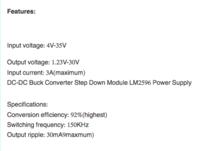roineust
Member level 3
Hello,
What would be the most light-weight and minimalist way to step down a 6 cell LiPo battery (25.2V fully charged) to the area of 24V-24.5V.
That is, to step it down 0.7V-1.2V. The battery is connected to a device that consumes 0.5A.
Thanks.
What would be the most light-weight and minimalist way to step down a 6 cell LiPo battery (25.2V fully charged) to the area of 24V-24.5V.
That is, to step it down 0.7V-1.2V. The battery is connected to a device that consumes 0.5A.
Thanks.
